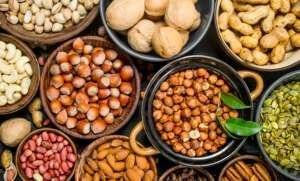
The Role of Calcium and an Anti-Inflammatory Diet in Managing Cervical Spondylosis Symptoms
Cervical spondylosis, a degenerative condition of the cervical spine, often results in pain, stiffness, and nerve compression. While medical interventions such as medications and physical therapy are essential, incorporating a well-balanced diet plays a critical role in managing symptoms. A diet rich in calcium and anti-inflammatory foods can support spine health, alleviate discomfort, and slow the disease’s progression.
Calcium’s Importance for Cervical Spine Health
Calcium is essential for maintaining strong bones and preventing bone loss, which is especially critical for individuals with cervical spondylosis. A deficiency in calcium can weaken the vertebrae, increasing the risk of fractures and exacerbating spinal instability.
Key Calcium-Rich Foods
- Dairy Products: Milk, cheese, and yoghurt.
- Leafy Greens: Kale, spinach, and collard greens.
- Fortified Foods: Plant-based milks (e.g., almond, soy) and fortified cereals.
- Nuts and Seeds: Almonds and sesame seeds.
For individuals unable to meet their calcium needs through diet alone, supplements can be a helpful alternative. However, it’s crucial to consult a healthcare provider before beginning any supplementation to avoid potential side effects or interactions.
Anti-Inflammatory Diet: A Natural Way to Manage Symptoms

Chronic inflammation can intensify the pain and stiffness associated with cervical spondylosis. An anti-inflammatory diet helps reduce systemic inflammation, thereby alleviating discomfort and promoting overall well-being.
Key Anti-Inflammatory Foods
- Omega-3 Fatty Acids: Found in salmon, mackerel, and flaxseeds, these healthy fats reduce inflammation and joint pain.
- Fruits and Vegetables: Berries, spinach, kale, broccoli, and other antioxidant-rich produce protect cells from oxidative damage.
- Whole Grains: Oats, quinoa, and brown rice regulate blood sugar and reduce inflammatory markers.
- Nuts and Seeds: Almonds, walnuts, and chia seeds provide healthy fats and antioxidants.
- Spices: Turmeric and ginger are known for their potent anti-inflammatory properties.
Foods to Avoid
- Processed Sugars: Found in sodas, candies, and desserts.
- Trans Fats: Present in fried foods and baked goods.
Eliminating these from the diet can significantly reduce inflammation and associated symptoms.
Combining Calcium and an Anti-inflammatory Diet
A holistic approach that combines adequate calcium intake with anti-inflammatory foods offers dual benefits. Calcium strengthens the spine, preventing further degeneration, while anti-inflammatory foods reduce pain and inflammation. This synergistic combination supports better mobility and overall quality of life for cervical spondylosis patients.
Practical Tips
- Include a variety of calcium-rich and anti-inflammatory foods in daily meals.
- Prepare simple recipes like turmeric-spiced salmon with a side of sautéed spinach for a nutrient-packed dinner.
- Stay consistent with dietary changes to observe long-term benefits.
Conclusion
Dietary interventions are a valuable complement to medical treatments for cervical spondylosis. A calcium-rich diet enhances bone health, while an anti-inflammatory diet reduces pain and inflammation. Together, they offer a comprehensive approach to managing symptoms and improving spinal health. Always consult with a healthcare professional before making significant dietary changes.
References
- Reddy, P. S., & Vinod, K. (2019). Role of calcium and anti-inflammatory diet in musculoskeletal health. Journal of Clinical Nutrition, 34(4), 230-240. Link
- Gupta, A., & Singh, S. (2021). Diet and nutrition in the management of cervical spondylosis. Indian Journal of Rheumatology, 44(3), 102-110. Link
- Patel, M. B., & Desai, S. K. (2022). The impact of an anti-inflammatory diet on cervical spondylosis patients. Spine Health Review, 12(1), 88-94. Link


